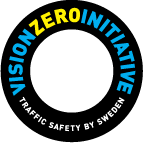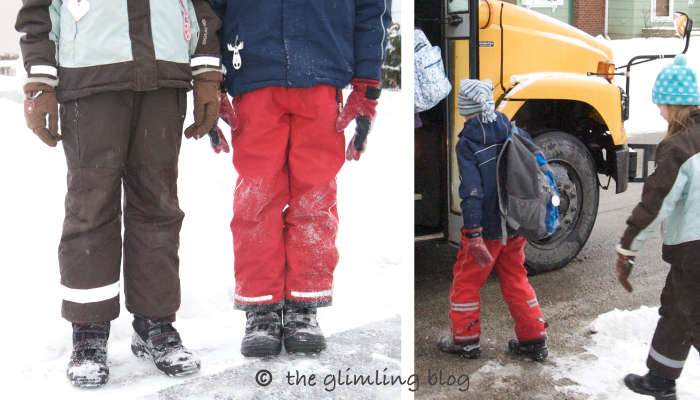The Vision Zero Initiative is not about nothing. On visionzeroinitiative.com we can learn that it is in fact a fundamental principle that requires ambitious work on infrastructure and attitudes:
“The Vision Zero is the Swedish approach to road safety thinking. It can be summarised in one sentence: No loss of life is acceptable. The Vision Zero approach has proven highly successful. It is based on the simple fact that we are human and make mistakes. The road system needs to keep us moving. But it must also be designed to protect us at every turn.”

Vision Zero was initiated by a decision of the Swedish parliament in 1997 and I saw firsthand how road safety improved in Sweden until I moved to the US ten years later. It was a bit of a shock to come here and experience the car-centric culture reflected in both citizen behavior/attitudes and infrastructure decisions. I’m happy to see that the Vision Zero has attracted a lot of attention and several American cities are adopting it to improve safety for pedestrians, bicyclists and drivers. Just a week ago, the first-ever Vision Zero for Cities Symposium (VZCS) took place in New York City – yay! There are a lot of needed improvements in infrastructure, but also in shifting attitudes among the general public. Deputy director of the organization Transportation Alternatives, Noah Budnick, acknowledged these two fronts in a recent interview with Tanya Snyder: “To me, culture change begins with leadership acknowledging that all traffic deaths and serious injuries are preventable, and then having accountability for safe design and safe behavior.”
With Swedes being more safety conscious than the average American, I think the US has a tougher road ahead than Sweden had in ’97 to shift attitudes among pedestrians and bicyclists. Additionally, there is a large group of drivers who don’t even see themselves as pedestrians when they step out of their cars.
As a newly arrived immigrant, redesigning infrastructure was, of course, not on my agenda, just on my wish list ;). However, with 7 out of 10 American pedestrian accidents happening in the dark (70% worse than in Sweden) I saw potential to inspire people to improve their nighttime visibility. Few want to look like traffic cones, so by offering stylish reflectors without highviz colors, even fashionistas can be seen when it’s dark. When digging into what’s going on within the Vision Zero community, I was surprised to see that the extensive work in Sweden toward promoting reflectors and reflective gear is never mentioned in context of the Vision Zero Initiative.
A quick recap: 30%-50% of Swedish adults wear reflectors regularly. They have 0.7 nighttime pedestrian accidents for each daytime accident. The corresponding number for the US is 2.3! And how many wear reflectors in the US? Has it even been studied? In Sweden and Finland, the use of reflectors is heavily promoted by both government agencies and insurance companies. Read our previous blog post on why that makes sense.
I recently spoke with Claes Tingvall, Director of Traffic Safety at the Swedish Transport Administration and father of the Vision Zero, to find out why reflectors are not part of Vision Zero. It turns out, that long before Vision Zero, there was a strong focus on increased visibility, which comprised the use of car headlights even during the daylight hours (a law since 1977), increased street lights at crosswalks, and the use of reflectors. Vision Zero didn’t include increased visibility as that was already work in progress.
Claes Tingvall also told me that they have had dialogues with the apparel industry about reflective details on coats, jackets, pants and shoes. So far, that has resulted in most children’s outdoor gear in Sweden having integrated reflectors! That is one reason that as many as 90% of Swedish children wear reflectors regularly. Snow and rain gear by Swedish clothing companies H&M and Polarn O. Pyret are available in the US too. (Since Swedish kids play outside every day, we’ve also found that these clothes outlast American ones in their price ranges.) For teens and adults, reflectors on mainstream clothing seem far away though, so we have to rely on adding our own reflectors no matter where we live. I also got confirmed that reflectors low down are more effective than higher up since the car headlights hit low. Motion creates attention so low hanging and dangling reflectors and reflectors attached to shoes or ankles are very effective.
In summary, Vision Zero is great for working with improved safety for pedestrians, bicyclists and drivers alike. It has given good results in Sweden since it’s launch in 1997. However, with as many as 70% of the US pedestrian accidents occurring in the dark, promoting reflectors is the low hanging fruit when it comes to getting the number of pedestrian fatalities down. It is also quick and cost effective to implement compared to infrastructure improvements. Sweden had done all the hard footwork in this area before the Vision Zero work was launched. In the US, Vision Zero needs to be upgraded to include reflectors and maybe also 24/7 car headlights and other visibility improving measures. Let’s call that Vision Zero Plus!


